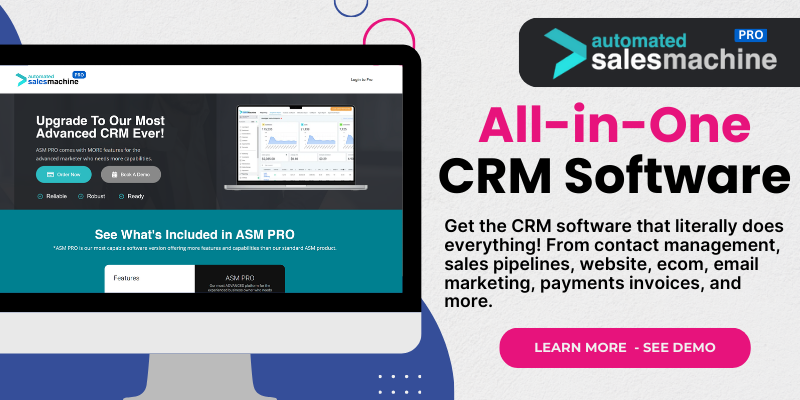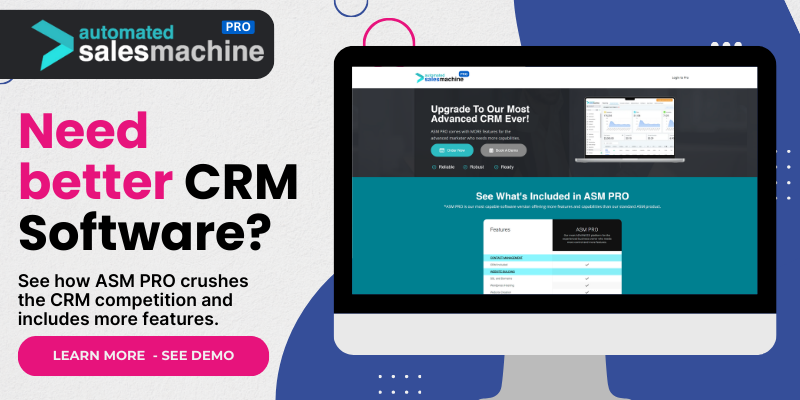Lead Management Automation
Understanding Your Leads
Lead management is crucial for any business, and let me tell you, automating this process has transformed the way I connect with potential customers. Initially, I was juggling spreadsheets and tons of sticky notes, which was a nightmare! Understanding who your leads are and what they need is the first step.
With a solid CRM system in place, you can categorize leads based on different criteria, such as their interest level or source. This allows for more targeted outreach. Imagine sending a follow-up email that feels tailor-made! It’s like having a conversation rather than shouting into the void.
Take time to analyze your leads. Tools like lead scoring can help you prioritize who to reach out to first. This enables you to focus your efforts on the hottest leads, improving conversion rates drastically.
Automating Follow-Ups
Picture this: there’s a swell of new leads coming in, and you need to follow up without dropping the ball. Automating follow-up emails through your CRM can save your sanity. I’ve set up workflows that automatically send a friendly “Hi there!” email right after someone signs up. Trust me, this simple touch can spark interest and keep engagement high.
With follow-up automation, you can set reminders too! If a lead hasn’t responded to you, your CRM will nudge you or even send a follow-up on your behalf. It’s like having a personal assistant reminding you not to lose track of potential sales.
Remember to keep your follow-ups personalized, despite being automated. This little trick ensures that leads feel valued and appreciated, boosting your chances of closing that deal!
Segmenting Your Audience
Segmenting your audience lets you send relevant content tailored to each group. Since I started utilizing CRM tools for this, I’ve noticed a significant improvement in engagement rates. By dividing my audience based on their behaviors, preferences, and demographics, I can deliver highly relevant messages.
This segmentation allows me to create targeted campaigns that resonate with individual audiences. For example, I can send product recommendations to specific demographics based on their past purchases or interests. This is way more effective than the old broad-spectrum approach!
Moreover, I can analyze the results of segmented campaigns to continually refine my approach. Automation tools in the CRM help track responses, making it easier to pivot strategies when something isn’t working. You gotta love data!
Customer Feedback Automation
Collecting Feedback Efficiently
Let’s be honest—feedback is a goldmine for any business, but getting it isn’t always easy. I used to send countless surveys and get crickets in return. By automating feedback collection through my CRM, I now have a steady flow of insights. I automatically send out surveys after purchases or interactions. This way, I catch customers while their experiences are fresh in their minds!
Utilizing triggered emails to collect feedback based on specific actions (like a completed purchase) means I don’t have to manually track customer touchpoints anymore. They get a friendly nudge in their inbox, and I’m ready to catch any feedback before it slips away.
When you automate this process, you build a culture of feedback and responsiveness. Customers appreciate being heard and actively contributing to your business’s improvement. Trust me, feedback isn’t just a checkbox—it’s a way to really connect with your audience!
Analyzing Feedback Data
Once I started collecting feedback more efficiently, the next step was diving into that data. Creating automated reports through my CRM allows me to spot trends and sentiments quickly. I’ve set up dashboards that highlight both positive feedback and areas that need improvement, which is super helpful.
This data analysis helps identify common issues or great features that resonate with users. I can adjust strategies or double down on things that customers love. It’s all about being proactive rather than reactive!
Making data-driven decisions enables me to create a better product and service overall. The bottom line? Don’t just collect feedback; leverage it to make impactful changes that enhance customer experience.
Implementing Changes
Getting feedback is just the first half of the battle; implementing changes is where the real magic happens! Automation tools help me prioritize feedback systematically. I’ve set up workflows that flag feedback that needs immediate attention.
After analyzing feedback, I can assign tasks to team members about what needs improvement. It’s effective collaboration! Everyone is on the same page and knows what priorities to tackle in order to enhance customer satisfaction.
When customers see their feedback turned into actionable changes, it builds loyalty. They love knowing they’re part of the conversation. That’s what keeps people coming back for more, and that fuels growth!
Sales Automation
Streamlining Your Sales Process
Sales can often feel like a chaotic whirlwind unless you have a solid process in place. By utilizing CRM automation tools, I’ve streamlined my entire sales process and set clear stages for where each lead should be. It helps me visualize where I’m at with every potential sale.
Each interaction can trigger various actions, whether it’s sending relevant documentation or scheduling a call. This way, I never miss a beat, and I can focus more on what matters—building relationships and closing deals!
Automated reminders ensure I never let a hot lead cool off. Tasks pop up on my calendar to schedule calls or send emails. It’s as if I have a personal assistant reminding me to reach out. Now that’s a game-changer!
Automating Document and Proposal Creation
Creating documents and proposals can eat up a lot of time, especially when you’re dealing with numerous leads. I implemented templates within my CRM that auto-fill customer details, making document creation a breeze. This means I can focus on personalizing my outreach rather than spending hours drafting proposals.
Additionally, I can quickly adjust templates based on the specific needs of the customer, ensuring that I’m providing the most relevant information. I’ve found that this also speeds up the timeline for closing deals—what’s not to love about that?
Having these automated systems in place not only keeps me organized but also maintains a professional touch. It’s these small details that leave a lasting impression on potential clients!
Tracking Sales Performance
Nothing beats visibility when it comes to sales performance. I’ve set up automated reports that track everything from lead conversion rates to sales successes. This allows me to assess what strategies are working or where I need to pivot.
Regular, automated performance check-ins mean I can keep my team accountable as well. It motivates everyone to push themselves and strive for better results. Plus, it helps identify shining stars on the team who deserve recognition!
Using data effectively leads to targeted improvements across the board, and that continuous evolution is what keeps us competitive. Remember, it’s not just about making sales; it’s about understanding and improving the sales process constantly.
Customer Retention Automation
Creating a Loyalty Program
We all know that retaining customers is cheaper than acquiring new ones, and automation can help with this! I leveraged my CRM tools to create a loyalty program that rewards customers for repeat purchases, referrals, and feedback.
This program is all automated; members get notifications about their rewards, exclusive deals, and early access to new products. It’s spruced up customer engagement and keeps them coming back for more!
When customers feel appreciated, their loyalty grows, and they’re more likely to refer friends or family. A solid loyalty program is like a warm hug to your customers, making them feel valued!
Personalized Communication
Communication can sometimes feel like a one-size-fits-all approach, but when I automated personalized messages based on customer history, everything changed! I send tailored emails around significant dates, promotions, or simply to check in.
Instead of a generic happy birthday email, I might include a special discount on their favorite product. This kind of thoughtful touch goes a long way in developing relationships and ensuring customers feel seen.
By keeping communication open and relevant, I’ve formed bonds that lead to long-term loyalty. Automated personalized communication keeps our brand top-of-mind, which is fantastic for retention.
Regular Check-Ins
Consistency is key! With automation, I can set up regular check-ins with customers based on their purchase frequency or milestones. It’s super helpful to nudge customers at the right moment and check how they’re enjoying their product or service.
These automated messages can provide a personal touch without being overwhelming. Customers feel appreciated when they see that you care about their experience post-purchase. That feedback loop is essential for ongoing improvement!
Regular communication sparks continuous engagement and builds community—maintaining that relationship long after they make their purchase.
Integration with Other Systems
Connecting Various Software
Integration is where the magic happens! By connecting my CRM with other tools I use, like email marketing software and social media platforms, I’ve built a seamless workflow that saves me tons of time and effort. It allows for better data flow across systems and prevents double entries.
Integration means that the data collected in one tool reflects instantly in the CRM. This cross-communication keeps everything aligned and helps avoid confusion. Imagine sending out an email blast, and all those leads are automatically updated—super handy!
From accounting tools to customer support software, the right integrations mean a smoother experience not just for me, but for my customers too!
Streamlining Data Management
Having all your data centralized in one system is invaluable. I’ve been able to automate data entry processes that previously required time and attention. No more manual updates or worrying about human error!
The results? More time to focus on strategy and less time stuck in the nitty-gritty. Keeping data accurate and up-to-date across integrated systems also leads to better decision-making.
Plus, I can run reports that include comprehensive data summaries from different sources, providing a holistic view of my business performance.
Automated Workflows
Lastly, I can create automated workflows that kick in based on various triggers. For example, when a new lead is generated, it can automatically send out a welcome email, tag that contact based on their interest, and set reminders for future follow-ups.
These workflows are lifesavers, ensuring that I don’t miss opportunities and can nurture leads throughout their journey without burning out. Integrating tools means I can create those workflows without needing extensive coding knowledge.
Ultimately, integrating your CRM with other systems leads to efficiency and allows for scalable growth moving forward. I encourage you to take the leap if you haven’t already!
FAQs
What are CRM automation templates?
CRM automation templates are pre-built workflows or processes that help streamline and automate various tasks within your customer relationship management system, such as lead management, sales processes, and customer feedback collection.
How can I benefit from CRM automation?
By automating tasks with a CRM, you can save time, enhance customer relationships, improve efficiency, and make data-driven decisions. It helps ensure you stay connected with your customers without overextending yourself.
Is it hard to set up CRM automation?
Not really! Most modern CRM systems come with user-friendly interfaces that allow for easy setup. With some learning upfront, you can create effective automation tailored to your business needs.
Do I need technical skills to implement CRM automation?
While some familiarity with tech can help, the majority of CRMs are designed for users of all skill levels. There are often tutorials, community forums, and customer support to guide you through the process.
What should I prioritize when using CRM automation?
Focus on automating processes that are time-consuming but essential, like lead management and customer follow-ups. Start small and gradually expand your automation as you become comfortable with the tools.

